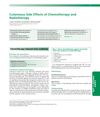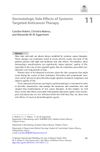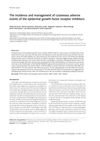When Bugs and Drugs Conspire: Driving Acneiform Skin Toxicity
February 2020
in “
The Journal of clinical investigation/The journal of clinical investigation
”
acneiform skin toxicity antineoplastic agents EGFR inhibitors MEK inhibitors Cutibacterium acnes IL-36γ keratinocytes neutrophil recruitment pustular rashes folliculocentric rashes NF-κB KLF4 EGFR/MEK/ERK pathway antibiotic therapy acne-like skin conditions cancer treatments skin bacteria acne eruptions skin rashes immune response antibiotics
TLDR Certain cancer drugs interact with skin bacteria to cause acne-like rashes.
In 2020, a study investigated the cause of acne-like skin conditions, often seen as a side effect of certain cancer treatments. The research found that these drugs, specifically antineoplastic agents that inhibit EGFR and MEK, interact with the skin bacteria Cutibacterium acnes, leading to an overgrowth and acne-like eruptions. This interaction induces IL-36γ in keratinocytes, causing neutrophil recruitment and pustular, folliculocentric rashes. The study also revealed that IL-36γ induction is a result of promoter binding by both NF-κB activated by C. acnes and KLF4, whose expression is stimulated by inhibition of the EGFR/MEK/ERK pathway. This provided justification for the use of antibiotic therapy in managing these eruptions. However, severe reactions could still lead to modifications in therapy and negatively affect patient quality of life. The study cautioned against the use of murine models for studying these mechanisms due to differences in the human and mouse IL-36γ promoter.




